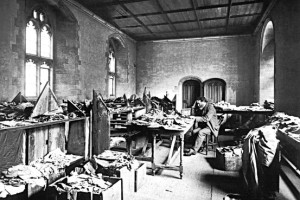First “Dead Sea Scroll” Found in Egypt Fifty Years Before Qumran Discoveries: Solomon Schechter presages later Essene scholarship, Raphael Levy, Biblical Archaeology Review (8:5), Sep/Oct 1982.
Of course no one called it the first Dead Sea Scroll in 1897. That was fifty years before the momentous discovery on the actual Dead Sea Scrolls, in 1947, in the caves of Qumran on the northwest shore of the Dead Sea. The manuscript Schechter received its nickname only after the Dead Sea Scroll scholars realized that it was a copy of a document that belonged to, and described, the sect whose hidden library had been discovered at Qumran.
Today, the “Damascus Document” (or “Zadokite Fragment”), as this Genizah manuscript is known to scholars, is considered to be the most important document in existence for understanding the history of the Essenes, the people who produced and subsequently hid the scrolls in the Qumran caves. And from its tattered pages, Schechter, who never dreamed of Qumran and died before its discovery, was able to give us out first recognizable portrait of the Qumran sect.
Read the rest of First “Dead Sea Scroll” Found in Egypt Fifty Years Before Qumran Discoveries in the online Biblical Archaeology Society Library.
What do you want to know?
Ask our AI widget and get answers from this website
